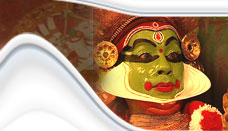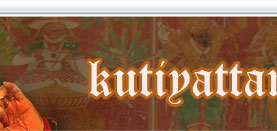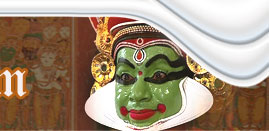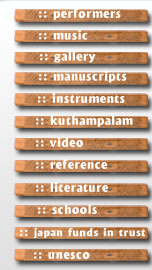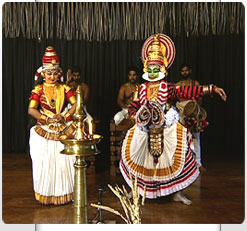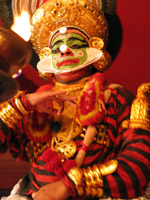 Justifying the saying “naatakaantam, kavitvam” Drama is the ultimate in poetry. It is commonly held thatSanskrit Dramas were written to be read rather than to be performed on the stage. They were subjected mainly to literary criticism, applying the principles of ‘rasa’ and ‘dhvani’ rather than to criticisms of stage performance.
Justifying the saying “naatakaantam, kavitvam” Drama is the ultimate in poetry. It is commonly held thatSanskrit Dramas were written to be read rather than to be performed on the stage. They were subjected mainly to literary criticism, applying the principles of ‘rasa’ and ‘dhvani’ rather than to criticisms of stage performance.
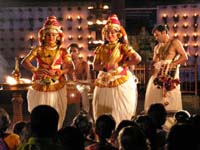 This raises two questions. Are the poetic modes of expression we find in Sanskrit Dramas,especially the ‘slokas’, capable of successful presentation on the stage? Caqn we express the various literary embellishments, ‘alankaras’, like simile, ‘upama’, metaphor, ‘utpreksha’, exaggeration, ‘atishayokti’, elaboration, ‘varnanas’, multiple meanings, ‘slesha’, and implied and remote ideas, ‘dhvani’, within the Limitations of the dramatic medium of expression?
This raises two questions. Are the poetic modes of expression we find in Sanskrit Dramas,especially the ‘slokas’, capable of successful presentation on the stage? Caqn we express the various literary embellishments, ‘alankaras’, like simile, ‘upama’, metaphor, ‘utpreksha’, exaggeration, ‘atishayokti’, elaboration, ‘varnanas’, multiple meanings, ‘slesha’, and implied and remote ideas, ‘dhvani’, within the Limitations of the dramatic medium of expression?
Sri. Harsha, ‘Subhadraadhananjayam’ and ‘Tapatisam varanam’ of Kulasekharavarman and ‘Mattavilaasa Prahasanam’ of Mahendra Vikrama Pallavan. The Koodiyaattom repertory also includes Saktibhadran’s ‘Aascharyachoodaamoni’, Neelakantan’s (or Mahendra Vikrama Pallavan’s) ‘Bhagavadajjukiyam’.
